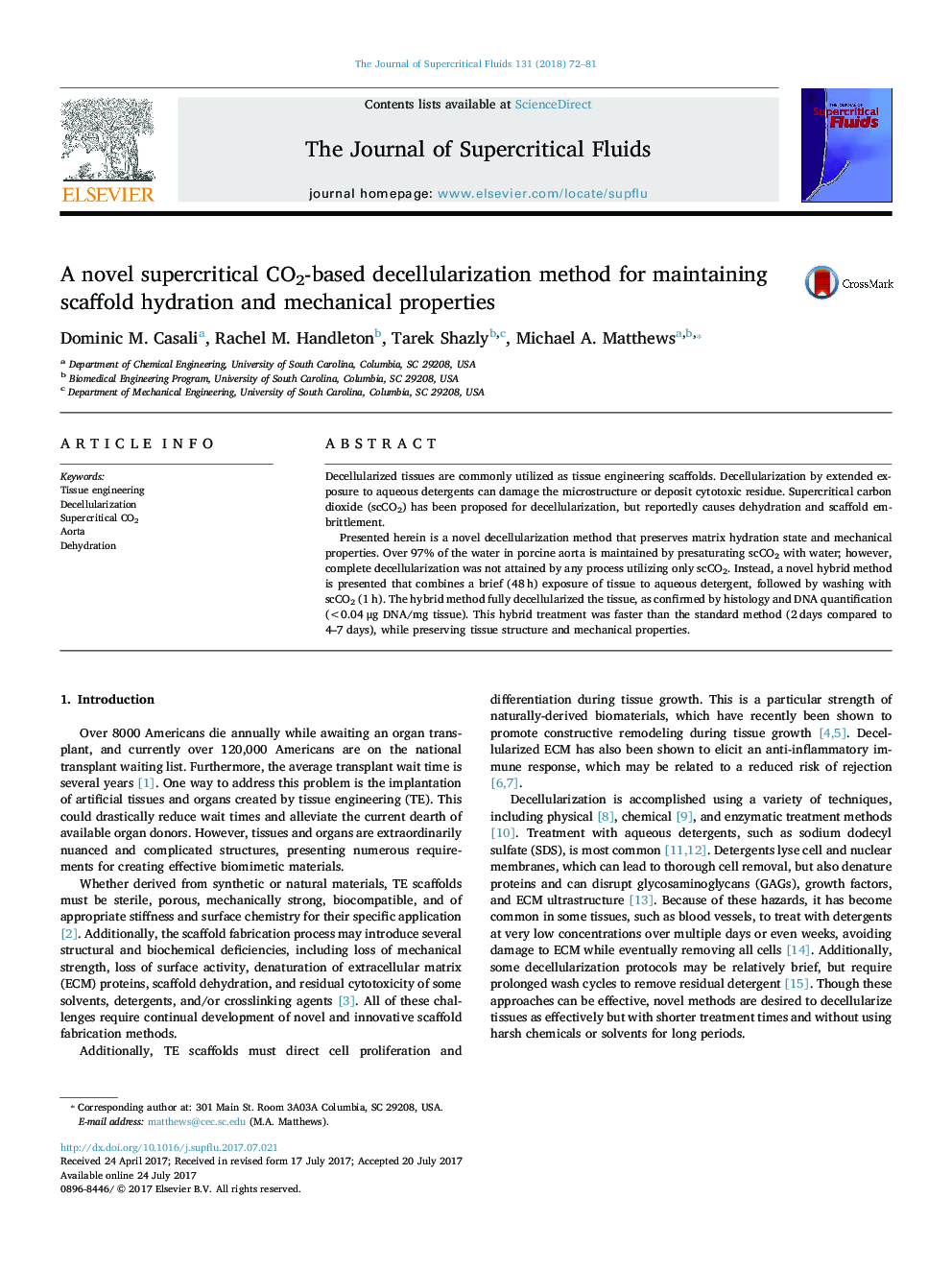| Article ID | Journal | Published Year | Pages | File Type |
|---|---|---|---|---|
| 4914585 | The Journal of Supercritical Fluids | 2018 | 10 Pages |
â¢Supercritical CO2 decellularization may be faster and gentler than other methods.â¢ScCO2 alone was unable to decellularize porcine aorta, even with ethanol added.â¢A hybrid detergent/scCO2 treatment fully and quickly decellularized porcine aorta.â¢Presaturating scCO2 with water prevented tissue dehydration during treatment.
Decellularized tissues are commonly utilized as tissue engineering scaffolds. Decellularization by extended exposure to aqueous detergents can damage the microstructure or deposit cytotoxic residue. Supercritical carbon dioxide (scCO2) has been proposed for decellularization, but reportedly causes dehydration and scaffold embrittlement.Presented herein is a novel decellularization method that preserves matrix hydration state and mechanical properties. Over 97% of the water in porcine aorta is maintained by presaturating scCO2 with water; however, complete decellularization was not attained by any process utilizing only scCO2. Instead, a novel hybrid method is presented that combines a brief (48 h) exposure of tissue to aqueous detergent, followed by washing with scCO2 (1 h). The hybrid method fully decellularized the tissue, as confirmed by histology and DNA quantification (<0.04 μg DNA/mg tissue). This hybrid treatment was faster than the standard method (2 days compared to 4-7 days), while preserving tissue structure and mechanical properties.
Graphical abstractDownload high-res image (82KB)Download full-size image
